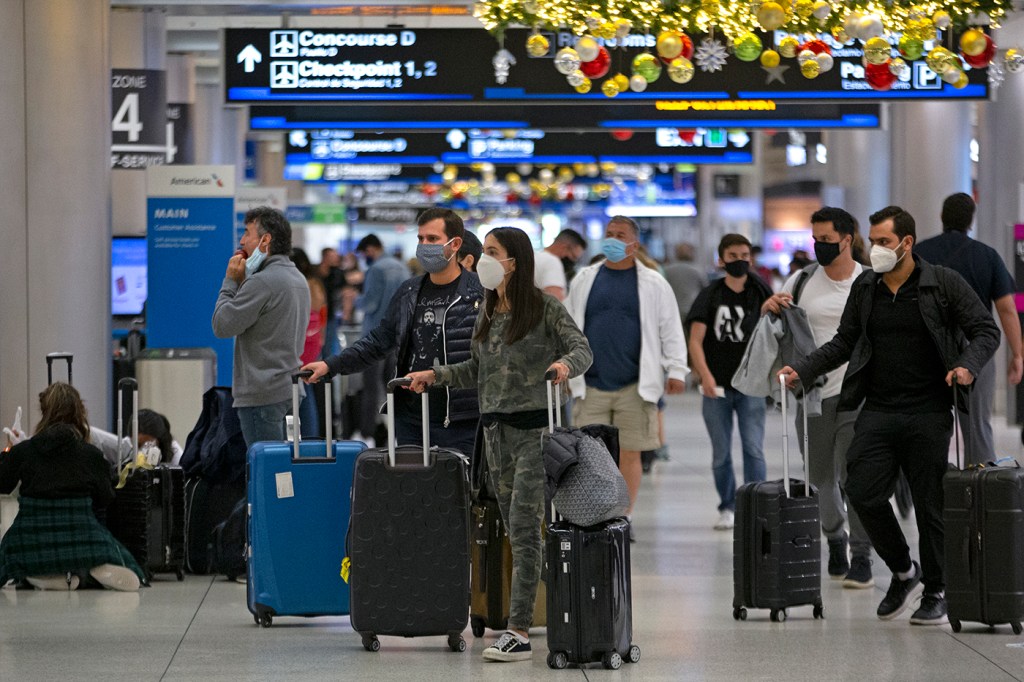The post-holiday COVID-19 surge might not be as bad as expected, study finds

People appeared to heed the advice of public health authorities in December by avoiding holiday parties, wearing masks, and keeping spaced apart from others, behavior that may have mitigated the current pandemic surge, according to a new study by researchers from Northeastern, Harvard, Northwestern, and Rutgers.
“It was plausible that we would see a big spike in proximity driven by the holidays, and it simply wasn’t the case,” says David Lazer, university distinguished professor of political science and computer and information sciences at Northeastern, and one of the researchers who conducted the study. “It did surprise me somewhat.”

David Lazer. Photo by Adam Glanzman/Northeastern University
Thirty percent of respondents surveyed between mid-December and mid-January reported attending Christmas or New Year’s Eve parties, the national online study of 26,000 U.S. residents found. Researchers didn’t have a comparable pre-COVID baseline figure, but “we suspect that it would be substantially higher,” they said in the report.
Greater mask-wearing, more distancing, and other improved personal behaviors reported in the study “will make things better than they would have been,” Lazer says.
But, he adds, “it’s not enough, especially once the new variant kicks in.”
The findings come as a more contagious strain of the coronavirus, first identified in Europe, begins to appear in the United States. The U.S. is experiencing the highest coronavirus case tally in the world at 23 million, and the highest death toll at almost 400,000, or more than a fifth of the global total. Infections, hospitalizations, and deaths are on the rise in many parts of the country.
In the survey, 40 percent of national respondents said that they visited a gym, bar, church, or restaurant in early January where others were present, down from a peak of 45 percent in late October.
“The good news is that, according to this crucial metric of social distancing, there has been substantial improvement since late October,” researchers wrote in the study. “The bad news is that, for all groups sizes considered, reports of indoor proximity are still roughly double what they were in late April” when lockdowns were in effect.
Researchers asked questions such as, “Were you in a room with other people in the prior 24 hours?’ They found a steady decline in participants who reported being in groups as small as five people and as large as 50 or more.
Group gatherings with people in close proximity to one another, researchers noted in the study, create conditions for super-spreading events.
But the findings come with a caveat, Lazer points out. The survey didn’t capture proximity patterns such as large numbers of passengers on a plane, for example.
Still, “the findings were certainly notable,” Lazer says.
In addition to improvements in limiting close contact with others and avoiding crowded places, researchers also noted an uptick in mask-wearing. All three activities improved by 4-5 percentage points since October.
Hand-washing, however, declined, most likely as a result of federal guidance that the coronavirus primarily spreads through respiratory droplets, and less commonly through touching surfaces, researchers noted.
Some parts of the country are doing better than others when it comes to pandemic-related behaviors to thwart the virus, the report shows.
Residents of California, Connecticut, New York, and the District of Columbia outperformed the national average of those who say they avoid close contact with others, stay away from crowded places, wash hands frequently, and wear masks. Residents of Iowa, Idaho, Montana, and North Dakota, by contrast, underperformed, the survey shows.
“We’re not doing enough to bend the curve in most places in this country,” says Lazer, “but the good news is that we have substantially pulled back in our behaviors that would spread the disease.”
For media inquiries, please contact media@northeastern.edu.





